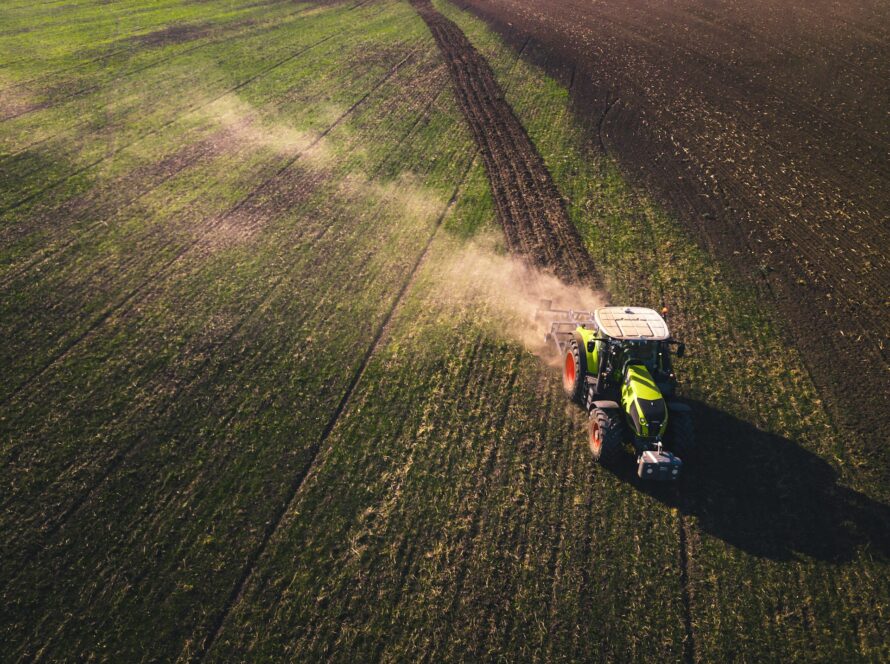Welcome to your ultimate guide to importing agricultural goods! As someone who’s been in the agricultural and marine supply industry for years, I understand the challenges that come with navigating the import process. Whether you’re a seasoned importer or just starting, this checklist for importing agricultural goods will help you ensure a smooth and compliant import process. Let’s dive right in!
The Ultimate Checklist for Importing Agricultural Goods
Understanding Regulatory Frameworks
International Standards and Compliance
One of the first things you need to do is understand the international standards that govern the import of agricultural goods. For example, the Codex Alimentarius is a collection of internationally recognized standards for food safety. Similarly, the International Plant Protection Convention (IPPC) sets standards for plant health to prevent the spread of pests and diseases.
A few years ago, I had a client who ignored these standards and ended up with a shipment that was held up at customs for weeks. It was a costly lesson for them and a reminder for all of us to never overlook these crucial regulations.
Country-Specific Regulations
Every country has its own set of rules and regulations when it comes to importing agricultural goods. You’ll need to research the specific requirements for the country you’re importing to. This often includes obtaining import permits and phytosanitary certificates, which certify that your products meet the health standards of the destination country.
When I first started importing goods into Europe, I was overwhelmed by the different regulations in each country. It took a lot of time and effort to get familiar with the rules, but it was worth it to avoid any potential issues at customs.
Tariffs and Duties
Understanding tariffs and duties is essential to avoid any unexpected costs. The Harmonized System (HS) codes are used to classify goods and determine the applicable tariffs. Make sure you have the correct HS code for your products and calculate the import duties and taxes accordingly.
I remember a time when a small mistake in the HS code classification resulted in a significant increase in import duties. Since then, I’ve always double-checked the codes to ensure accuracy.
Supplier Selection and Verification
Researching Potential Suppliers
Selecting a reliable supplier is crucial for a successful import process. Start by conducting thorough background checks on potential suppliers. Look for reviews and testimonials, and verify their certifications, such as Organic or Fair Trade, to ensure they meet your standards.
I once had a supplier who provided glowing references, but after a little digging, I discovered they had a history of delayed shipments and quality issues. It saved me from a lot of potential headaches.
Establishing Contractual Agreements
Once you’ve chosen a supplier, it’s essential to have a detailed contract in place. This should include terms and conditions, quality assurance clauses, and dispute resolution mechanisms. Having a solid contract can protect you from unexpected issues and ensure that both parties are clear on their responsibilities.
Logistics and Transportation
Choosing the Right Shipping Method
Deciding on the best shipping method can be tricky. You’ll need to compare the options of air, sea, and land transport, considering factors like cost, delivery time, and the nature of your goods.
For instance, when I was importing perishable goods, air transport was the best option despite being more expensive. It ensured the products arrived quickly and in good condition, saving me from potential losses due to spoilage.
Packaging and Labeling
Proper packaging and labeling are crucial to comply with the destination country’s standards. Ensure your goods are securely packaged to prevent damage during transit. Sustainable packaging options are also worth considering to minimize environmental impact.
One of my shipments was once delayed because the packaging didn’t meet the country’s regulations. Since then, I’ve always made sure to double-check the packaging requirements before shipping.
Insurance Coverage
Don’t forget to insure your goods! There are different types of insurance, such as cargo and liability insurance. Choose the appropriate policy to cover potential risks during transit.
I’ve had a few close calls where insurance saved me from significant financial losses due to damaged goods. It’s always better to be safe than sorry.
Documentation and Compliance
Essential Import Documents
Proper documentation is vital for a smooth import process. Ensure you have all the necessary documents, such as the commercial invoice, bill of lading, and certificate of origin. These documents provide essential information about your shipment and are required for customs clearance.
I once had a shipment held up because a critical document was missing. It was a stressful situation that could have been avoided with better preparation.
Specialized Certificates
Depending on the nature of your goods, you might need additional certificates, such as sanitary and phytosanitary certificates. These documents certify that your products meet the health and safety standards of the destination country.
Quality Control and Inspection
Pre-Shipment Quality Checks
Before your goods leave the supplier, it’s crucial to conduct pre-shipment inspections. Hiring a third-party inspection service can help ensure that the products meet your quality standards and prevent any surprises upon arrival.
Post-Arrival Inspections
Once the goods arrive, conduct post-arrival inspections to ensure compliance with local standards and verify the condition of the products. Laboratory tests for contaminants might also be necessary, depending on the type of goods you’re importing.
Risk Management
Identifying and Mitigating Risks
Importing agricultural goods comes with various risks, such as pests, diseases, and transportation damage. Identifying these risks and developing mitigation strategies is crucial to prevent potential losses.
Contingency Planning
Always have a backup plan! Establish relationships with multiple suppliers and create alternative logistics plans to handle unexpected disruptions.
Storage and Handling
Temperature Control
For temperature-sensitive goods, cold chain logistics are essential to maintain product quality. Implement monitoring systems to ensure the correct temperature is maintained throughout the transit and storage process.
Proper Storage Conditions
Ensure your storage facilities meet the necessary conditions for your goods. This includes proper temperature control, humidity levels, and pest control measures.
Marketing and Distribution Strategies
Conducting Market Research
Understanding the local market demand is crucial for successful distribution. Conduct market research to identify your target audience, analyze competitors, and determine the best marketing strategies.
Selecting Distribution Channels
Choosing the right distribution channels can make a significant difference in your success. Evaluate the options of working with wholesalers, retailers, or direct-to-consumer sales to find the best fit for your business.
Legal and Ethical Considerations
Adhering to Labor Laws
Ensure that your sourcing practices are ethical and comply with labor laws. Avoid suppliers that engage in child labor or exploitation, and promote fair working conditions.
Environmental Sustainability
Sustainable farming practices and reducing the carbon footprint of your supply chain are increasingly important. Consumers are more aware of environmental issues, and promoting sustainability can enhance your brand’s reputation.
Conclusion
In summary, importing agricultural goods involves navigating various regulations, selecting reliable suppliers, ensuring proper documentation, managing risks, and maintaining quality control. By following this ultimate checklist for importing agricultural goods, you’ll be well-prepared to handle the challenges and ensure a smooth and compliant import process.
Ready to start importing agricultural goods with confidence? Follow this checklist for importing agricultural goodsto ensure a successful import process and reach out if you need any assistance or have questions. Your journey to smooth and compliant importing starts here!
Appendix
Resources and References
- Codex Alimentarius: Link to Codex Alimentarius
- International Plant Protection Convention (IPPC): Link to IPPC
- Harmonized System (HS) Codes: Link to HS Codes
Glossary of Terms
- HS Code: Harmonized System code used for classifying traded products.
- Phytosanitary Certificate: A document certifying that a shipment meets the health standards of the importing country.
- Cold Chain Logistics: The management of temperature-sensitive products through a supply chain.
With this guide in hand, you’re well-equipped to navigate the complexities of importing agricultural goods. Best of luck, and happy importing!



